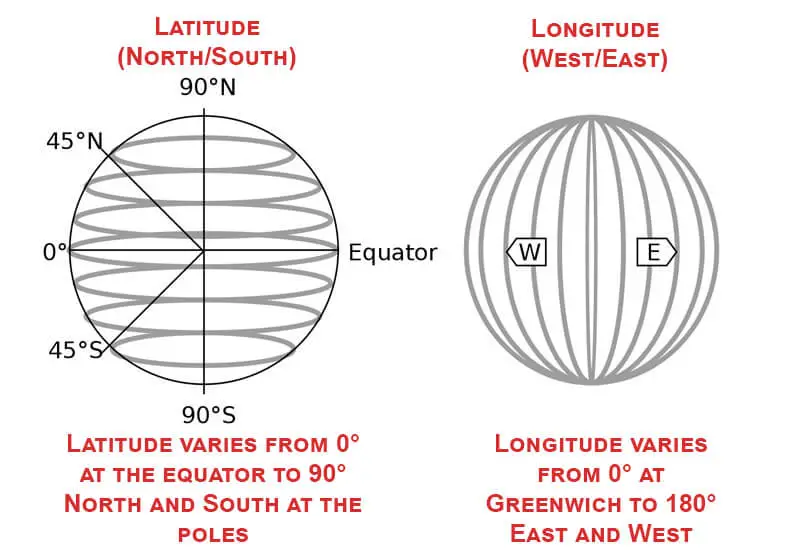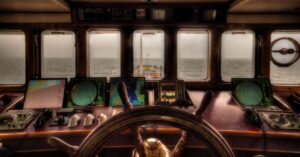When we travel on the road, we use miles or kilometers to measure distance and miles per hour or kilometers per hour to determine speed. However, when traveling on the water by boat or ship, we use nautical miles and knots as units of measurement.
In this article, we’ll explore the origins of nautical miles and knots, their differences, and why they remain essential units of measurement in navigation today. Let’s dive in!
Why to Use Nautical Miles? | Nautical Mile vs Mile
A nautical mile is the unit of measure for the distance traveled through water, abbreviated by M or NM. The nautical mile is a little longer than the unit of a mile on land (statute mile).
On land, a mile is a length of 5,280 feet. In air and sea travel, a nautical mile equals one minute of arc around the sphere of Earth, with 60 minutes of arc per degree longitude. In easier terms, 1 Nautical Mile equals 1.151 Miles (1.852 Kilometers or 6076 Feet) on land.
When you are traveling on the road, there are many references and landmarks to guide us. However, a ship in the mid-sea has no such advantage. Hence, using the latitude and longitude coordinates for long-distance travel through water is practical. And the Earth’s circumference becomes a part of precise measurement.
The nautical charts referred to by the sailors use latitudes and longitudes. Making it more straightforward for sailors when they use nautical miles. The measuring unit nautical mile is based on the latitude and longitude coordinates of the Earth. A nautical mile is defined as the meridian arc length corresponding to 1/60 of a degree or one minute of latitude.
An international organization, now known as International Hydrographic Organization, had officially set the exact equivalent of one nautical mile as 1.852 kilometers (1.1508 miles) in 1929. The US accepted the international nautical mile in 1954, and the UK accepted it in 1970.
Geographical Longitude and Latitude
The longitude of the Earth is measured by imaginary lines. These lines run around the Earth between the north and south poles, and these lines are also called meridians. Considering the distance around the Earth as 360 degrees, one meridian measures one arc degree of longitude.
Latitudes are imaginary lines that divide the Earth. And at 0-degree latitude (Equator), it divides the Earth into two halves, the northern and southern hemispheres. Latitudes are also known as parallel lines. As you travel from the equator toward the north or south, the latitude increases, reaching 90 degrees at the north and South poles.
What is a Knot? Conversion of Knot to Kilometer
While a nautical mile measures the distance, the knot measures the travel speed. And one knot is defined as one nautical mile per hour. A ship traveling at one knot along a meridian travels approximately one minute or 1/60th of a degree of latitude in one hour.
1 Knot equals 1 Nautical Mile per Hour, equivalent to 1.1508 Statute Miles or 1.852 Kilometers per Hour on land.
Origin of the Term ‘Knot’
In the olden days (till the middle of the 19th century), the speed of a ship at sea was measured using a chip log. A chip log is a wooden log in the shape of a circular quadrant (pie of a pizza). This chip log is then tied to a rope with knots at regular intervals of 47 feet 3 inches (14.4018 meters) from the chip log. The chip log was cast from the stern (back) of the moving ship.
One sailor allowed the rope to pass through his fingers. While, another sailor counts the time using a 30-second sand glass. At the end of 30 seconds, the first sailor pulls back the chip log into the ship and counts the number of knots on the rope traversed during 30 seconds.
The number of knots traversed during 30 seconds multiplied by the distance between two knots (47 feet 3 inches (14.4018 meters)) gives the distance traveled by the ship in 30 seconds. This method gave the value of one knot 1.85166 kilometers per hour.
What is the Difference Between Nautical Miles and Knots?
Now you know the difference between a nautical mile and a knot. A nautical mile is a unit of measurement derived from the ordinary land mile, which measures distance primarily at sea and in the air. On the other hand, a knot measures the speed of travel. And one knot is defined as one nautical mile per hour.
Since a knot is defined as a nautical mile per hour, it would be wrong to say knots per hour. The speed of a cruise ship is 15 knots. Which means the ship can travel at a speed of 15 nautical miles per hour.
Conclusion
In conclusion, nautical miles and knots hold great significance in the world of navigation, with strong connections to the Earth’s geography and the rich history of exploration.
As we journey across oceans and skies, gaining a deeper understanding and appreciation for these units helps us honor the legacy of sailors, aviators, and navigators who have depended on them over the centuries.






